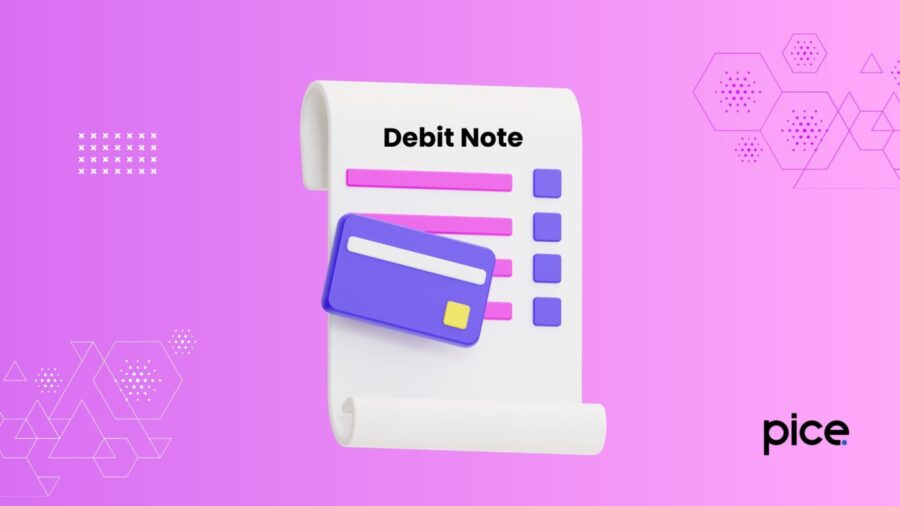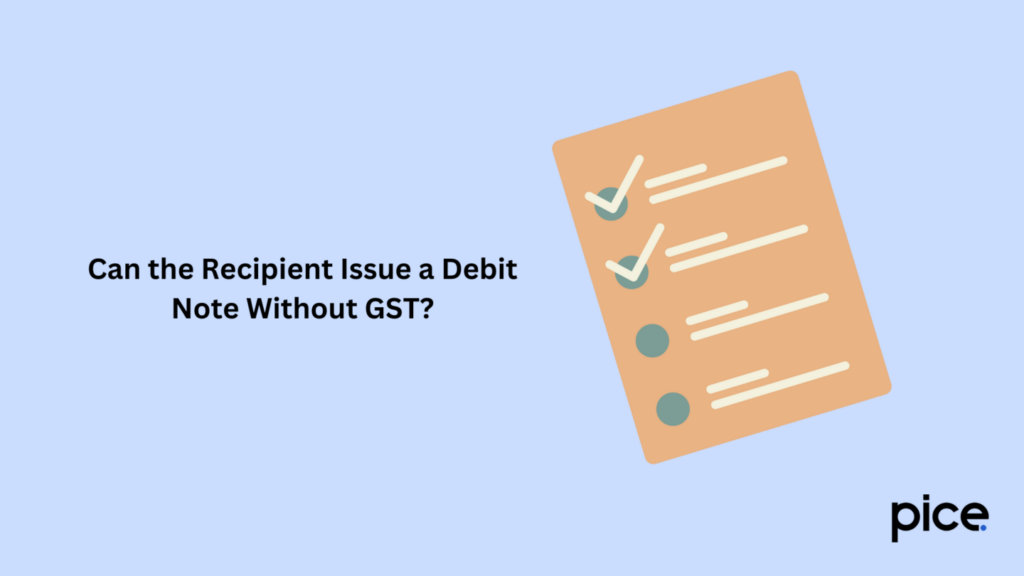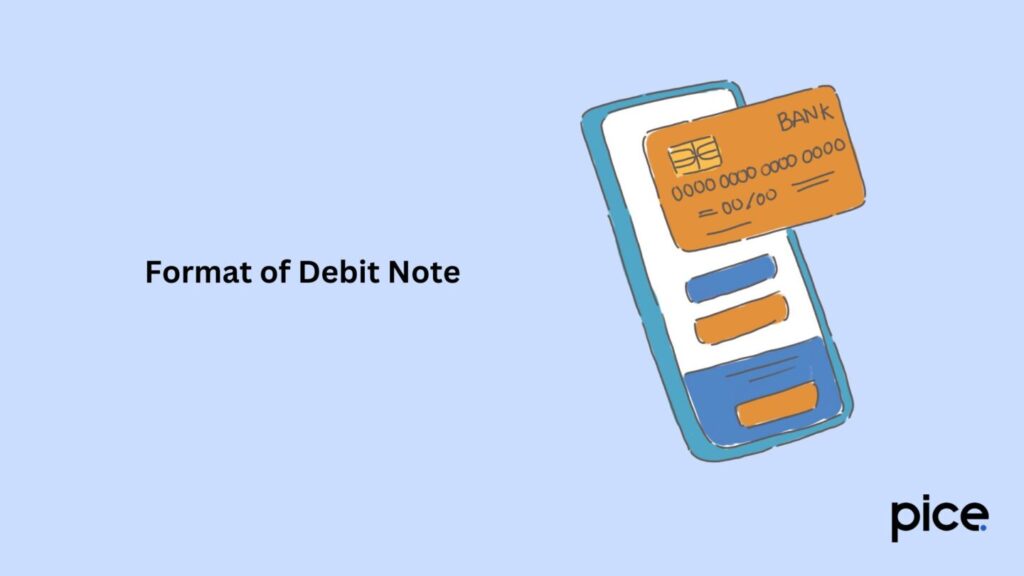What is a Debit Note in GSTR 9?
- 12 Sep 24
- 7 mins

What is a Debit Note in GSTR 9?
Key Takeaways
- Debit Note Purpose: Issued to increase the taxable value or tax charged in the original invoice under GST.
- Recipient's Role: Recipients can issue Debit Notes without GST if the correction doesn’t affect tax liability.
- Debit vs. Credit Note: Debit Notes increase amounts owed; Credit Notes decrease them, ensuring GST compliance.
- New GST System Impact: Enhances accuracy with real-time invoice matching and automated reconciliation.
- Format Compliance: Debit Notes must include specific details like supplier info, original invoice reference, and tax amounts for proper GST reporting.
A Debit Note under GST is a document issued by a supplier to the recipient when there is an increase in the taxable value or tax charged in the original invoice. This could happen due to reasons such as the supply of additional goods or services, correction of an undercharged invoice, or any price revision.
It acts as a supplementary document to the original invoice and ensures that the correct tax is paid to the government.
Can the Recipient Issue a Debit Note Without GST?

Under the GST law, the recipient can indeed issue a Debit Note without mentioning GST, particularly when there is no need to adjust the taxable value or the tax amount. This scenario typically occurs in cases where the original invoice was undercharged, but the correction does not impact the tax liability.
For instance, this could happen when dealing with non-taxable supplies, exempt goods, or transactions with unregistered persons. In such cases, the rate of tax remains unaffected, and the debit Note serves solely to correct the invoice value.
Difference Between Debit Note and Credit Note
The primary difference between a Debit Note and a Credit Note lies in their purpose and issuance:
| Aspect | Debit Note | Credit Note |
| Purpose | Increases invoice value or tax charged. | Decreases invoice value or tax charged. |
| Issued By | Supplier | Supplier |
| Credit-Debit Notes | Reflects an increase in the amount owed. | Reflects a reduction in the amount owed. |
| Format | Must include supplier, recipient details, original invoice reference, and corrected value. | Should detail the reduction and reference the original invoice. |
| Issuance | Used when additional charges are needed. | Issued to correct overcharges or errors. |
| B2B Supplies | Common in B2B transactions for increased charges. | Common in B2B transactions for correcting overcharges. |
| Outward Supplies | Reflects an increase in outward supplies. | Reflects a decrease in outward supplies. |
| Supplementary Invoice | May accompany a supplementary invoice. | May accompany a supplementary invoice to correct charges. |
| Tax Invoices | Adjusts the tax invoice for additional charges. | Adjusts the tax invoice for reduced charges. |
| Reporting | Reported in GST returns to reflect value adjustments. | Reported in GST returns to correct overcharged amounts. |
| Registered Person | Issued between registered persons. | Used to correct transactions between registered persons. |
These documents are crucial in maintaining accurate financial records and ensuring compliance with GST regulations.
Implications Due to Changes by the New GST Return System
The new GST return system has introduced significant changes in reporting Debit Notes, focusing on detailed and accurate matching of invoices with Debit/Credit Notes. Key implications include:
- Real-time Invoice Matching: Ensures accurate, real-time matching of invoices with Debit Notes, reducing discrepancies.
- Improved Compliance: Links Debit Notes directly to invoices, enhancing compliance and capturing price adjustments, including those in intra-state supplies.
- Automated Reconciliation: Minimizes errors and manual corrections, offering a complete supply chain solution with proper reporting of credit notes and adjustments.
- Streamlined Reporting: Simplifies the issuance and reporting of credit notes, ensuring efficient management of B2B transactions and supply types.
This system enhances accuracy, compliance, and efficiency in GST reporting.
Format of Debit Note

A Debit Note under GST must include specific details as required by GST law to ensure proper documentation and compliance. The mandatory details are:
- Supplier and Recipient Details: Name, address, and GSTIN of both the supplier and the recipient.
- Debit Note Number and Date: A unique serial number and the date of issuance.
- Original Invoice Reference: The original invoice number and date to which the Debit Note relates.
- Goods/Services Details: Description, quantity, rate, and amount of the goods or services.
- Tax Details: The amount of tax being debited, including CGST, SGST, and IGST.
- Supplier’s Signature: The authorized signature of the supplier.
Additionally, it’s important that the Debit Note format aligns with any credit note details when issued for similar purposes. It should account for any prices after supply adjustments, be part of the invoice level declaration, and be compatible with any issue-revised invoices or supplementary tax invoices.
This format must also be compatible with ERP e-TDS return filing solutions and align with annual and monthly return requirements for regular tax return filing by taxable persons.
Reporting of Debit Note Under the Existing Return Filing System
Under the existing GST return filing system, Debit Notes are reported in the GSTR-1 return by the supplier in the month in which the Debit Note is issued. The details include the original invoice reference, the value of the Debit Note, and the tax amount.
The recipient reflects the Debit Note in their GSTR-2A, and it is automatically populated in their GSTR-2. Any mismatches between the supplier’s and recipient’s returns are reconciled manually.
Reporting of Debit Note Under the New Return Filing System
The new GST return system, which includes forms like ANX-1 and ANX-2, simplifies the reporting of Debit Notes. Suppliers report Debit Notes in ANX-1, and these details are auto-populated in the recipient’s ANX-2. This system promotes seamless reconciliation and reduces manual intervention, ensuring that any adjustments are accurately reflected in the tax liability.
Conclusion
For B2C (Business to Consumer) supplies, the reporting of Debit Notes under the new GST return system ensures transparency and accuracy in tax reporting. Although the recipient does not have to deal with GST adjustments, the supplier must ensure that any changes in the invoice value are accurately captured in the Debit Note to maintain compliance.
💡If you want to streamline your payment and make GST payments, consider using the PICE App. Explore the PICE App today and take your export business to new heights.
 By
By 
















